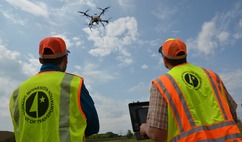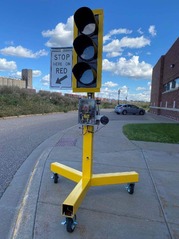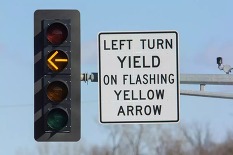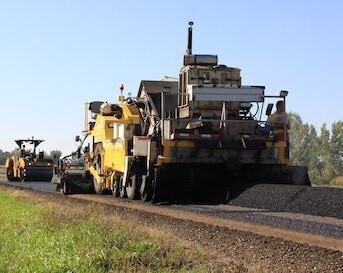|
Transportation Research Update
 Evaluating and Communicating the Benefits of Transportation Research

Policy & Planning — Developing new technologies, knowledge and tools helps MnDOT and the Local Road Research Board (LRRB) enhance transportation services. Understanding and communicating the benefits of transportation research and innovation allow agencies to share new developments with research partners and other states, and to inform policymakers and the public about the return on research investments. New tools will help the agencies assess and share project benefits efficiently and effectively.
Investigators consulted and surveyed Minnesota transportation research professionals and other state departments of transportation to identify needs and best practices for research benefit evaluation and communication. Agency stakeholders helped to develop a new framework that builds on tools already used by MnDOT and LRRB. Research project teams can now prioritize their efforts to evaluate and communicate benefits with a tailored, project-specific approach. Benefits and communication activities are identified at each stage of a project, allowing for flexibility as the project and its implementation evolve. The new process will support strategic research investments into the future.
|
Developing Smart Signs for Traffic Control in Work Zones

Construction, Traffic & Safety — Flaggers directing traffic in work zones have a dangerous job. They are often considered the first line of defense against stopping distracted or aggressive drivers from entering work zones. Prior smart sign prototypes that direct traffic and detect unsafe vehicles approaching a work zone have not been successful due to complex operational requirements and prohibitive costs. New research, however, has brought local transportation agencies closer to a safer solution.
Working directly with maintenance workers to ensure their needs and expectations were met, researchers developed and tested two smart sign systems. Both a Stop/Slow paddle, similar to what flaggers traditionally use, and a portable traffic signal prototype were modified to include vehicle trajectory tracking and audiovisual warning capabilities. Testing the system in a driving simulator revealed safer stopping behavior at work zones with the Stop/Slow paddle system. Further research will fine-tune and test the system in a real-life setting.
|
Drivers Correctly Interpret Flashing Yellow Arrows for Left Turns

Traffic & Safety — Permissive left turns, where a driver does not have a green arrow and must wait for a gap in oncoming traffic before turning, can be indicated by different traffic signal types. While traditionally a solid green circle meant drivers could turn during a break in oncoming traffic, flashing yellow arrow signals are becoming a preferred signal type in Minnesota and across the nation. New research provides local traffic engineers with confidence that drivers understand the meaning of the signal, even without an accompanying Left Turn Yield sign.
A survey of over 400 drivers overwhelmingly indicated that they understood a flashing yellow arrow signal meant they could turn left when it was safe to do so, even without a yield sign. Driver behavior captured on video at intersections in the Twin Cities illustrated consistent results. The data also indicated that drivers waited for a longer gap with solid green circles than with flashing yellow arrow signals, indicating that flashing yellow arrow signals produce improved traffic flow. Engineers will continue to install flashing yellow arrow signals for permissive left turns, including at intersections where protected left turns (with a green arrow) are allowed at certain times of the day.
|
Adapting Asphalt Mixtures for Tougher Rural Roads

Construction & Materials — Minnesota’s varied weather conditions take a toll on its rural roads, but improvements in asphalt design may offer better durability. A significant percentage of the state’s rural roads are deemed low volume, which means they see fewer than 400 vehicles in a day. Although these roads do not experience the issues associated with high traffic levels, they struggle with problems due to environmental conditions, especially freeze-thaw cycles common in cold weather states. The resulting cracks, ruts and potholes shorten the lifetime of the pavement and can cause safety issues for drivers.
In a Local Road Research Board funded study, researchers analyzed asphalt mixtures to develop better construction options for rural asphalt roads under our difficult weather conditions. Asphalt pavements are designed to include air pockets, or voids, that allow for some water to flow through the asphalt structure, but water can also freeze in these pockets when the temperature drops. By controlling for the air pockets and other asphalt properties in rural settings, researchers identified an asphalt mixture that promises greater durability for low-volume roads.
|
New Guidebook: Ride Quality of Asphalt Pavements

Construction & Materials — This guidebook from the Local Road Research Board addresses two issues local agencies identified regarding asphalt pavements: ride quality and overlays, and reflective cracking. Researchers reviewed past research, surveyed local agencies to gather data and current practices, and conducted working group meetings to identify causes and potential resolutions. It offers ideas, examples and solutions for practitioners to consider as they develop their own conclusions on how best to address these issues.
|

|
|
|
MnDOT invites and encourages participation by all people in their programs, services and activities.
If you need an ASL, a foreign language interpreter, or documents in an alternative format (such as braille, large print or in a different language) at no cost, please email your request to Janet Miller at ADArequest.dot@state.mn.us or call 651-366-4720. Relay service: 711.
If you need any other reasonable accommodation to participate (such as seating modification or auxiliary aids), please email your request to Accessibility.DOT@state.mn.us or call 1-833-400-8432. Relay service: 711.
|
|
|
|